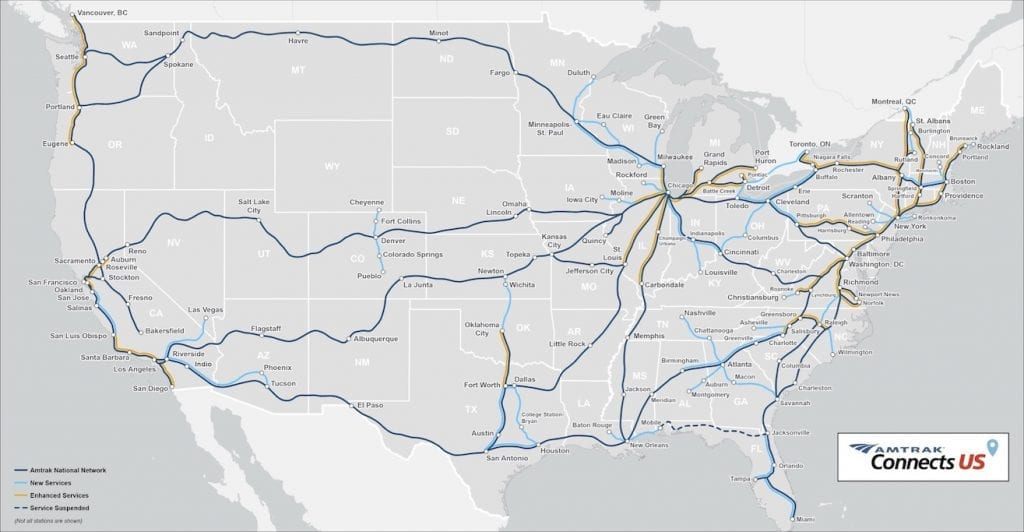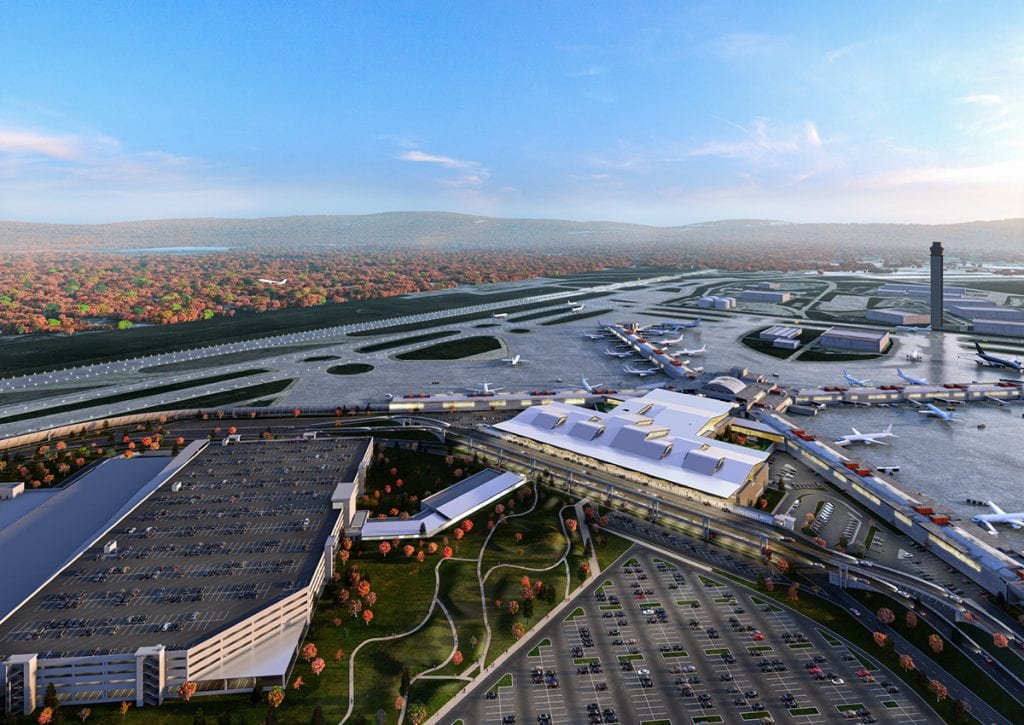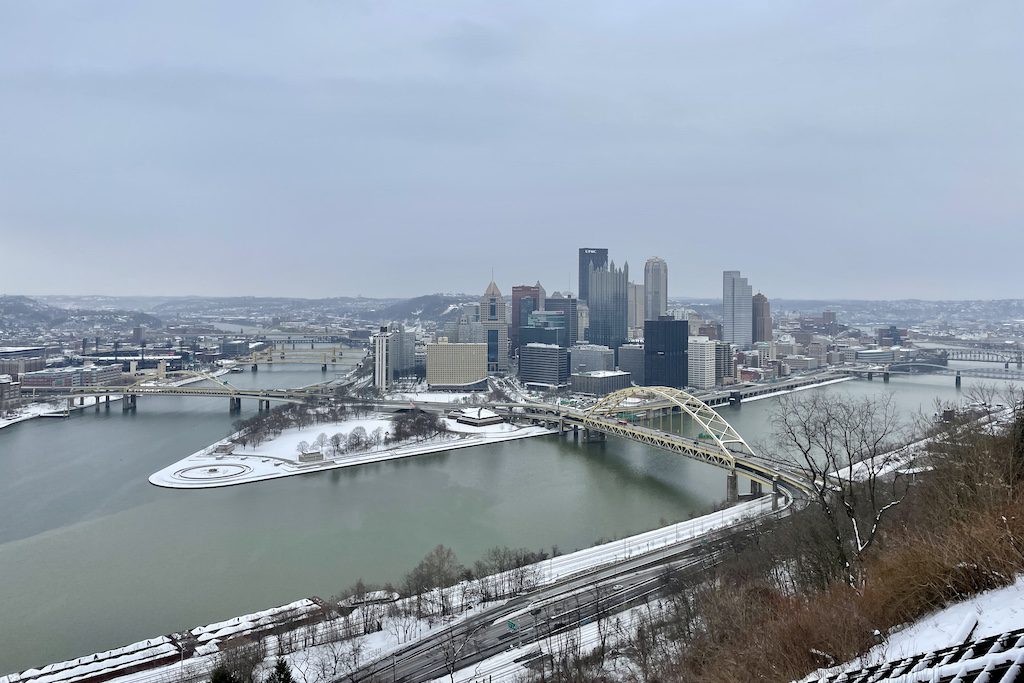Skift Take
The years of infrastructure week memes are finally over with President Biden's $2 trillion proposal to upgrade and green America's infrastructure. But with battle lines already forming, can he get the package over the line in Congress?
America finally got the infrastructure week it’s been waiting for — and joked about — for more than four years. On Wednesday, President Joseph Biden unveiled the ambitious $2 trillion American Jobs Plan plan that calls for a massive investment in everything from electric vehicles to trains and airports.
The “once-in-a generation investment in America,” as Biden put it during a speech in Pittsburgh, includes $621 billion for transportation infrastructure. The funds will be used for a laundry list of priorities, including upgrading and replacing roads and bridges, building a national electric-vehicle charging station network, expanding passenger rail and upgrading airports.
Much work remains. The final amount, both for transportation infrastructure and other priorities, will almost certainly change as Congress debates the measure. And with slim Democratic majorities in the legislature, passage is not a foregone conclusion. The president hopes to sign an infrastructure bill into law this summer with spending spread out over eight years.
In addition, Biden’s plan to pay for the measure by raising the corporate tax rate to 28 percent has already received pushback from the U.S. Chamber of Commerce and others.
Still, the proposal itself is good news for the travel industry that looks set to finally get a major investment after a severe coronavirus pandemic knock. No matter where people go, they need to get there — whether it’s on an iconic American road trip, by train or on a plane. Upgraded and expanded infrastructure will only make these trips easier regardless of mode.
Green Push
A big part of the president’s plan is to green America’s infrastructure. This ranges from repairing and replacing roads and bridges — rather than expanding them — to $174 billion to greatly expand the use of electric vehicles, including a national network of 500,000 electric-vehicle charging stations by 2030.
This proposed investment comes as travelers are increasingly conscious of the climate impact of their wanderings. Companies are taking note touting their green credentials and offering new, more sustainable options like Google Maps’ new default directing drivers to the most “eco-friendly” route.
U.S. airlines, after years with little emphasis on environmental issues, have suddenly embraced the issue. Just this week, trade group Airlines for America (A4A) unveiled a commitment from the industry to reach net-zero carbon emissions in 30 years, or by 2050. This will partially be driven by a broad expansion of sustainable aviation fuel availability by 2030.
The A4A announcement comes as airlines have stepped up their individual commentary on environmental issues in the past six months. United Airlines, long a leader on the issue, committed to go “100 percent green” 2050 in December and unveiled an investment in air mobility and electric aircraft developer Archer in January.
But while Biden’s plan touts the green benefits of electric cars and more trains, it lacks any mention of sustainable aviation. This could be an issue for the industry’s embrace of sustainable aviation fuels, which have long faced challenges amid a shortage of affordable and scalable feedstock. Airline executives have met with White House officials seeking subsidies to boost investment in these fuels.
Amtrak Joe Pushes Trains
Inter-city passenger rail is a big winner in Biden’s plan, as was widely expected from a president with the nickname “Amtrak Joe.” The American Jobs Plan proposed $80 billion for everything from much needed maintenance of existing tracks to modernizing Amtrak’s busy Northeast Corridor and connecting new city pairs. The U.S. has long provided little federal funding for passenger rail.
Investment in rail travel has many potential benefits. Beyond the lower carbon footprint of trains over driving, connecting more cities to frequent, reliable rail service could increase access to various popular destinations. Shortly after Biden’s announcement, Amtrak released a map showing dozens of corridors that could see new or improved rail service with the investment.

A map of Amtrak’s proposed expansion with funding from President Biden’s infrastructure bill. (Courtesy of Amtrak)
“Amtrak has a bold vision to bring energy-efficient, world-class intercity rail service to up to 160 new communities across the nation,” said Amtrak CEO Bill Flynn in a statement.
The emerging breed of state-owned or private passenger railroads also stand to benefit from new federal funding. These include Brightline in California and Florida, the California High-Speed Rail Authority, and Texas Central. All need funding for initial lines or planned expansions that could bring frequent trains to places like Dallas, Disney World, Las Vegas and San Francisco.
“We are following with great interest and as the only private passenger company with intercity operations, we are ready to play a big part in the discussion,” said Ben Porritt, Senior Vice President of Brightline, in a statement.
Airport Investment
“I just left your airport,” Biden told the crowd gathered in Pittsburgh. “The director [Christina Cassotis] of the airport said, ‘We’re about to renovate the airport.’ Is that right? … ‘We’re going to renovate. We’re going to employ thousands of people.’ And she looked at me and said, ‘I can’t thank you enough for this plan.’”
The president was referring to the $1.4 billion modernization of the Pittsburgh International Airport. Paused early in the Covid-19 crisis, work recently resumed on the project with approval of the first site preparation contracts.

Pittsburgh International Airport hopes to accelerate its terminal modernization project with funds from Biden’s infrastructure proposal. (Courtesy of Pittsburgh Airport)
The American Jobs Plan dedicates $25 billion for airports. The funds could be used for terminal and other improvements, including new “multimodal connections” that would allow more people to access airports without a car. The inclusion of the latter comes two months after the Federal Aviation Administration eased rules over the kinds of transit connections airport funds could be used for.
The proposed funding will go a “long way” towards modernizing airports in America, industry group Airports Council International-North America CEO Kevin Burke said at a U.S. Chamber event on Wednesday. However, he added that airports need $115 billion over five years to bring facilities up to “21st century standards.”
In his speech, Biden made no mention of the NextGen air traffic control upgrades that airlines have long sought. The investments would both modernize the country’s air traffic control system as well as improve efficiencies, including making flights more direct — and more green — in the process.
There is widespread agreement that the U.S. needs infrastructure investment. Both the Trump and Obama administrations talked about a sweeping packages but never got them over the finish line. While Biden has general support in Congress for an infrastructure package, he needs to navigate differences over what should be invested in and how to pay for it.
Already, Senate Minority Leader Mitch McConnell (R-Ky.) has come out against the proposal citing Biden’s proposed corporate tax increase. The battle over infrastructure is on.
The Daily Newsletter
Our daily coverage of the global travel industry. Written by editors and analysts from across Skift’s brands.
Have a confidential tip for Skift? Get in touch
Tags: airports, amtrak, Biden, electric cars, infrastructure, trains
Photo credit: President Biden wants to invest $621 billion in everything from bridges to trains and airports over the next eight years. Edward Russell / Skift
